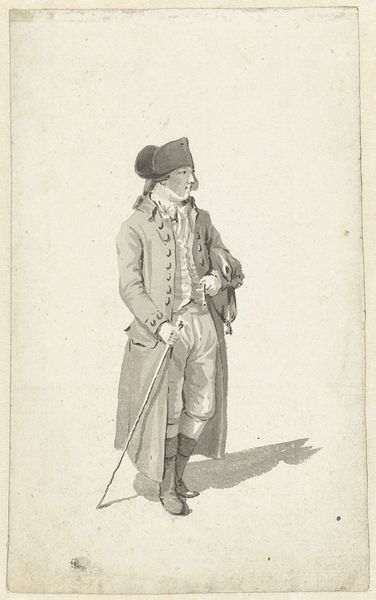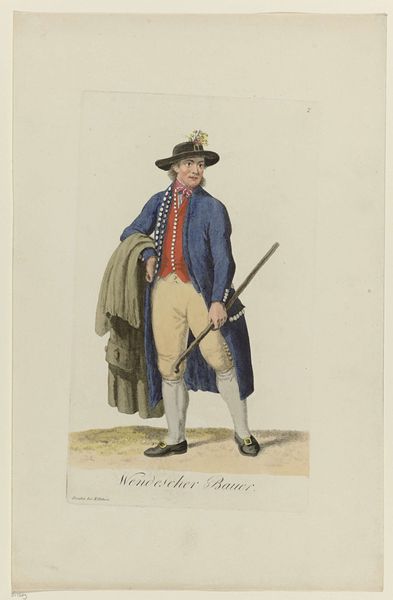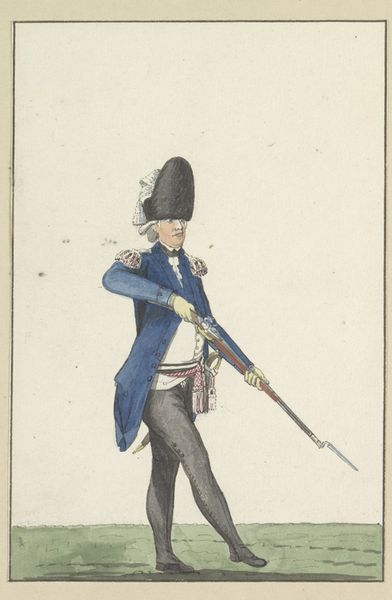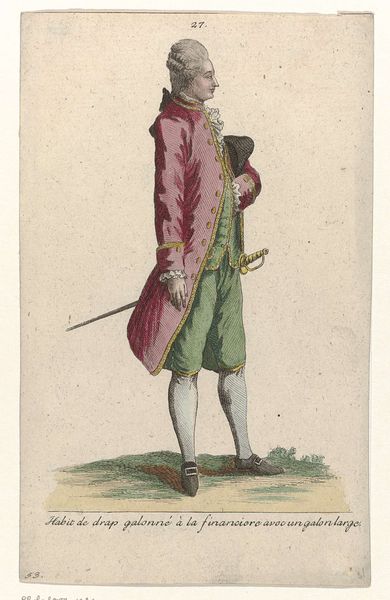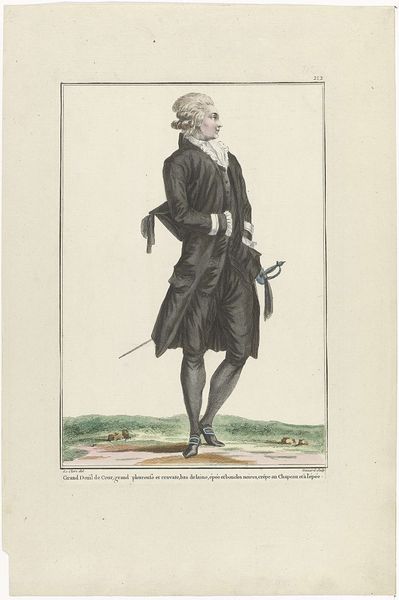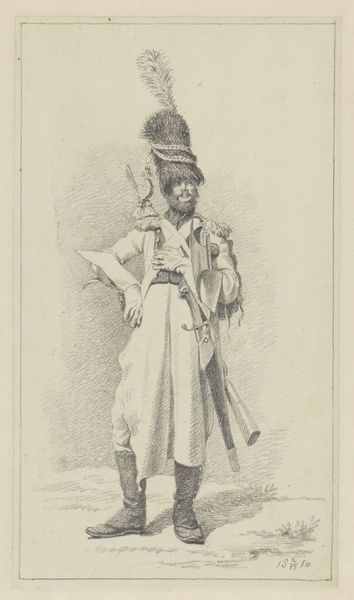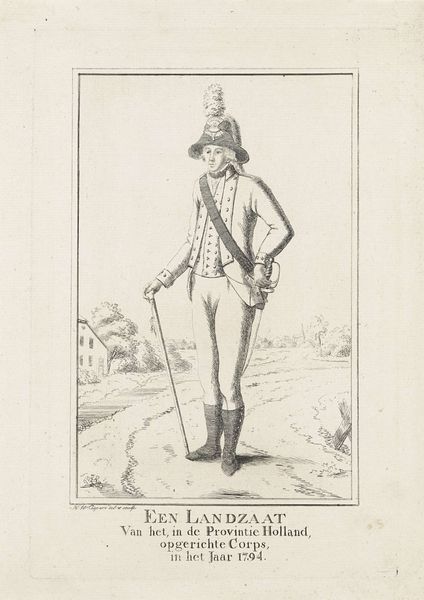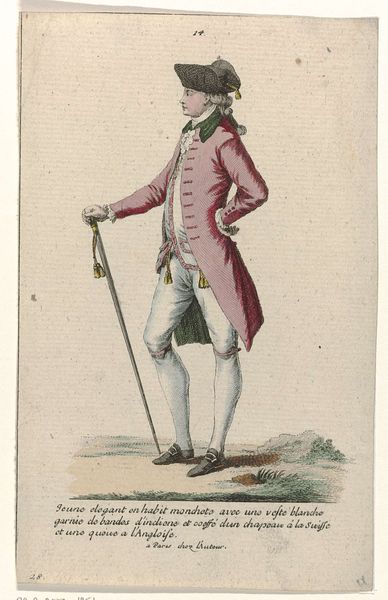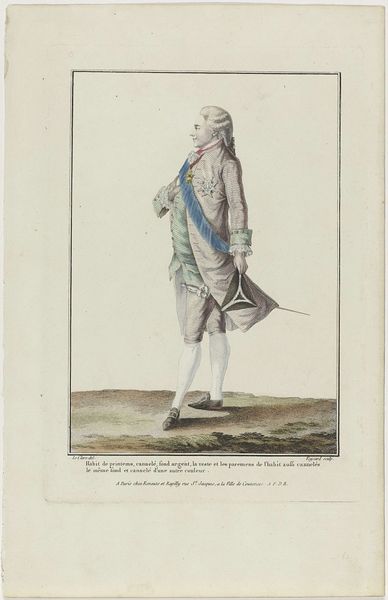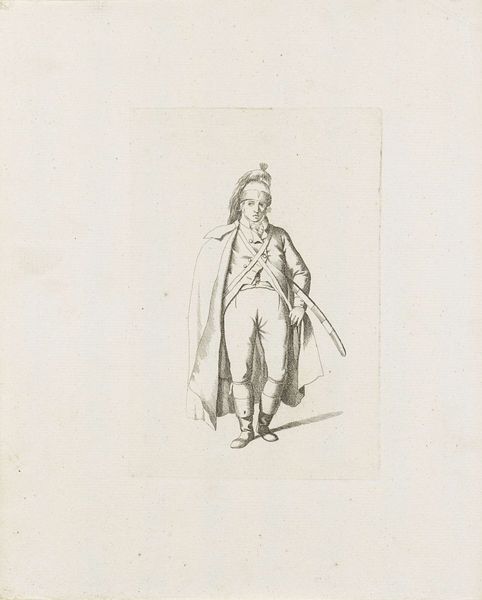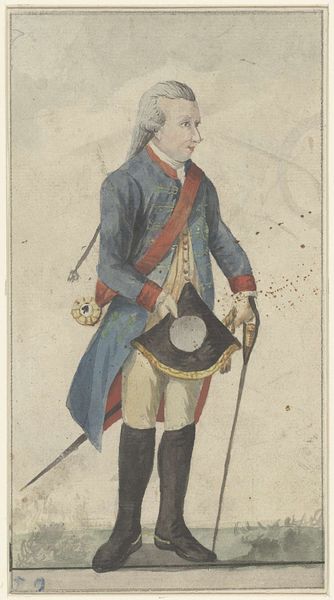
watercolor
#
portrait
#
neoclacissism
#
caricature
#
watercolor
#
muted green
#
watercolour illustration
#
genre-painting
#
watercolor
Dimensions: height 245 mm, width 145 mm
Copyright: Rijks Museum: Open Domain
Curator: Let’s take a look at “Kostuum van een portier bij de Katholieke Kerk” or “Costume of a Doorkeeper at the Catholic Church,” a watercolor by Samuel Gränicher, dating from 1803-1808. Editor: Immediately striking is the sheer detail and precision in the rendering of the garments – almost hyper-realistic for a watercolor. The artist really considered the properties of each fabric: wool, linen. It feels like he truly knew the material processes involved in creating such an elaborate getup. Curator: Precisely! And notice how Gränicher employs Neoclassical elements? The composition is restrained, the figure posed with a serene dignity that echoes the ideals of order and reason, but still with a sense of caricature. The staff especially conveys authority; consider the implications of standing at the literal threshold to a sacred space. Editor: That gilded staff almost looks too heavy for this doorkeeper. And I find myself thinking about who crafted the garment: the seamsters, tailors and embroiderers. Their labor is essential to projecting power. There's an implicit critique there; the opulence relies entirely on unseen hands. It really challenges any clear delineation between craft and art, between worker and subject. Curator: Perhaps. Yet, one could also argue that the portrait embodies the Church’s earthly power – a visual representation meant to inspire a particular blend of awe and… perhaps just a little bit of fear. Think about how different the effect would be if he lacked that elaborately detailed attire. Editor: Yes, but that’s my point! What’s fascinating is precisely *how* that effect is manufactured. You have this single figure made to bear the entire weight of religious institutions, achieved via layers of costly fabric and artisanal craftsmanship, the results of many hours spent stitching… Curator: That's true; considering the collective labor adds another layer to interpreting what this artwork means to me. Editor: Exactly! It shifts the reading away from the sole symbolism to all those artisans. That's precisely what resonates for me in Gränicher’s work – the interplay of visibility and invisibility within material culture.
Comments
No comments
Be the first to comment and join the conversation on the ultimate creative platform.

